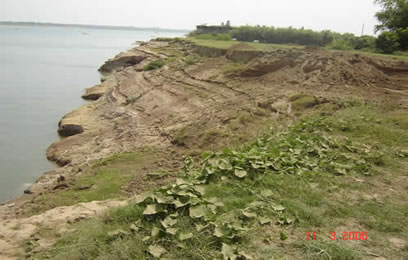
Mr Tuon Van of Cambodia is sharing with us his project to stabilize the banks of the Mekong River with vetiver grass. Below is his description of the project with photographs.
Description:
The land is located on national road no. 6, 30km north of Phnom-Penh, Cambodia. It is of a rectangular shape, measuring approx. 10 hectares.
The front side faces the national road, the back borders the Mekong river and the right and left sides are natural canals which during raining season, are full of water from the Mekong; the water then flows along the sides of the land to reach the other side of the road through 2 bridges.
Problems:
The land faced two problems:
- On the Mekong side, during low water level, the waves hit the lower part of the cliff of 14 meters high and because of the weak constitution of its base (clay) and the heavy weight on top, mass of soil just fell and disappeared to the river. The loss happened every year and after 10 years, 50 meters have disappeared which translated into a loss of 50 m x 200 m (width) = 10,000 m2 or 1 hectare! At a present market value of US$20/m2, the loss amounts to US$200,000.
- During the raining season when the water level on the Mekong is high, water fills the canal and runs along the side of the land to the other side of the road under a bridge. But since some parts of the land are not high, the water, instead of running parallel and along the side of the land, goes into the land and crosses it to join the other side of the land. By doing so, it takes with it lots of soil creating large and deep pockets inside the land.

Actions:
A solution must be found to solve permanently the above-mentioned problems otherwise with time the land will disappear in its entirety.
The higher sections of the cliff will be removed to form a slope of 30 degree so that mass of soil would not fall and disappear.
The soil thus removed, will be used to fill the deep pockets inside the land and to establish a small elevated road all along one side of the land so that the water will flow smoothly and directly under the bridge to the other side of the road, hence will not cross over the land.
On the front section of the land where the pockets are deep (up to 3 meters), a wall made of bricks and cement will be erected to retain the soil.
The land excavation and filling together with the bricks and cement wall works took about 2 months to complete, from mid march to mid may 2006.
35,000m3 of soil was removed and used to do the small road and fill in the pockets.
320 meters long of bricks and cement wall was erected with height from 1,00 to 3,20 meters.
Cost for the above works: US$40,000
Vetiver solutions:
Starting late June/early July, the Mekong water level goes up from 0 (base level during dry season) to reach its peak of 14 meters high (vertical drop) in October then goes down to reach level 0 by early/mid December. Because of the constant changes of water level during the raining season, the waves and strong current “eat” into the surface of the soil with loss of up to 1 meter deep of the slope surface. Therefore, the soil surface must be protected.
Conventional means such as rocks, steel and cement will be very expensive and might not be a permanent solution since water will attack from below and the sides, including both neighbors’ land.
This is where vetiver could offer a solution.
The main issue with planting vetiver on the slope is its survival chance below water. Indeed, a large portion of the slope, hence most of the vetiver, will be under water for 3 to 4 months.
Vetiver nursery and planting:
Since I could not find any vetiver (type V.zizaniodes) in Cambodia and the quantity required was large, I had to bring tillers from the Land Development in Thailand, (in June and in July 2006) to start a nursery, for which I had allocated 1 hectare (10,000 m2) of land with fences to protect from humans and cows.
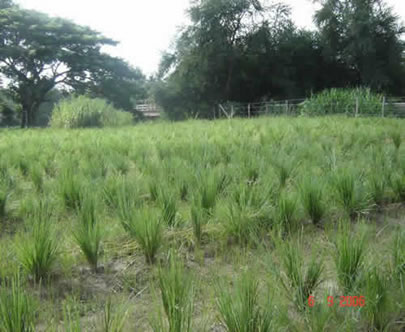
Preparation:
- Shade and humidity: when the tillers arrived, they were not in a good shape, 20% had died during transportation since the driver didn’t take proper care of them. We had to store them under a shelter, sprayed them with water then dipped their roots to the ground filled with water.
- Tillers preparation: we cut the tillers to 30cm and the roots to 5 cm. Then tied them to form bunches of 50 tillers each.
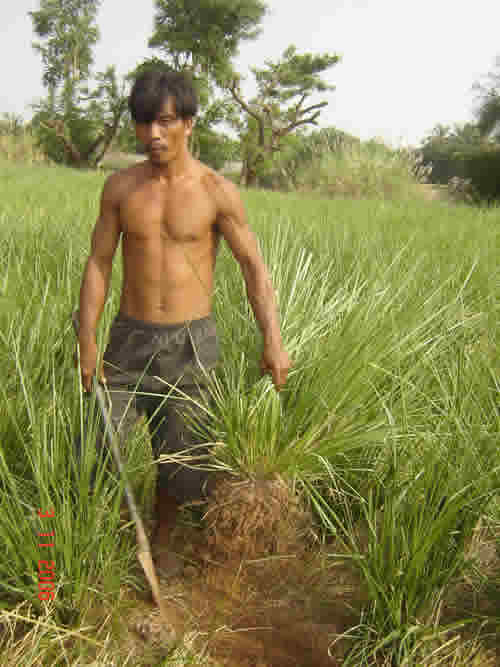
- Roots dipping: in water for 7 days, “horse tea” for 1 week or “mud gravy” instantly before planting, all worked well but the “mud gravy” saved time.
- Raised beds: for planting, 1 meter, 2 shoots at 50cm interval and for walking, 1 meter.
- Lots of water and lots of sun, no fertilizer used only animals manure
- Cut leaves to 50cm after 1 month to accelerate tillers multiplication, then cut again in 3 months.
- After 5-6 months, the vetiver are matured and the clumps are thick with a average of 50 tillers.
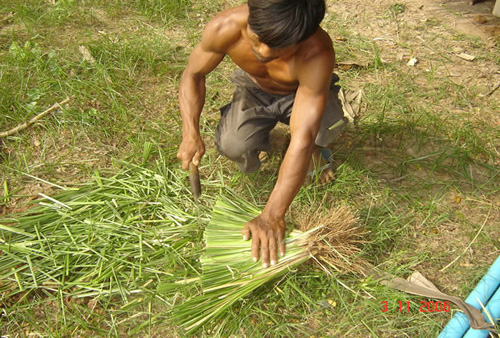
Planting:
The water level started to go down in mid November, so we had to plant vetiver on the slope as soon as possible to enable the grass to fully mature before the water levels start to come up again.
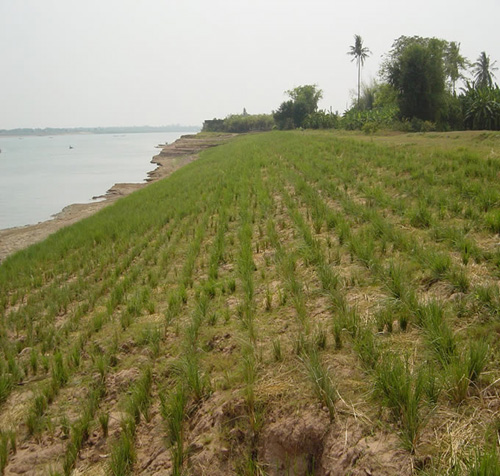
We dug the clumps out, cut the leaves to 30cm, separated the tillers, cut their roots to 5cm, dipped the roots in the “mud gravy” then planted on the slope in the following manner:
- parallel to the river flows: 1 plant every 10cm interval, rows every 1 meter
- perpendicular to the river flows: 1 plant every 20cm, rows every 2 meters.
Add fertilizer to accelerate their growth since we want fully mature vetiver as soon as possible.
Cut the leaves to 30cm after 1 month to accelerate tillers multiplication, then another cut after 3 months.
Lots of water and sun shine.
Vetiver action: in mid May, the vetiver are fully grown, thick and very nice green colour. AND ready to face the flood. One final touch: just before the water level started to cover them, we cut the grass to 50cm to increase their chance of survival under water.
The vetiver will “nail” the slope surface to the ground. Their leaves will prevent the waves and strong currents to “eat” into the soil surface. They will also retain some of the soil brought in by the Mekong. The only question: will they survive?
Present situation:
As of the date of this report, the whole slope is covered with water.
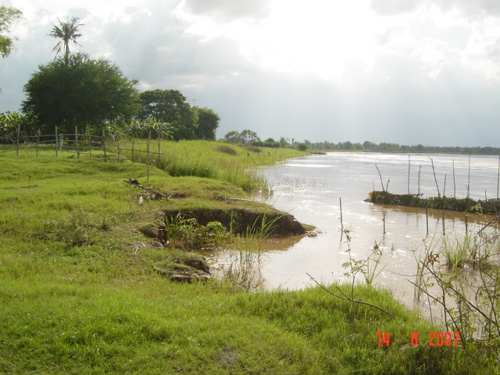
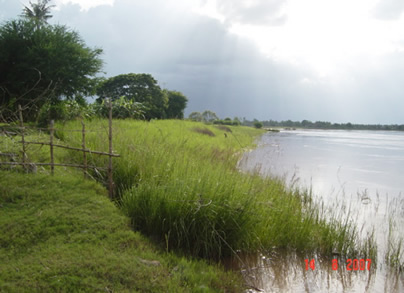
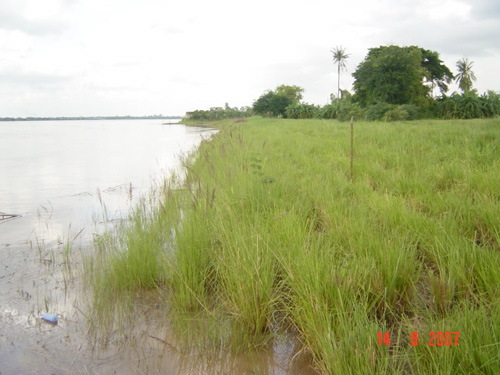
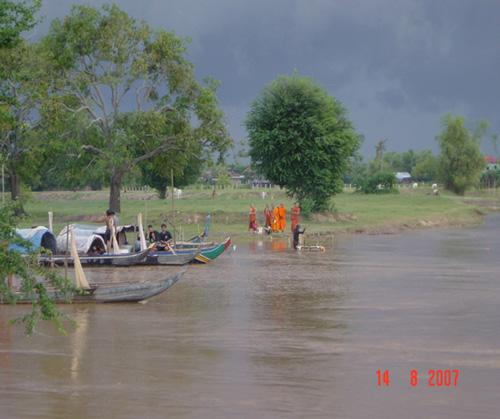
We will know if the vetiver will survive once the water level recedes starting in November, ie, in a month’s time. Let’s cross our fingers!
The next series of images show the Mekong water levels recede through to December 14 2007
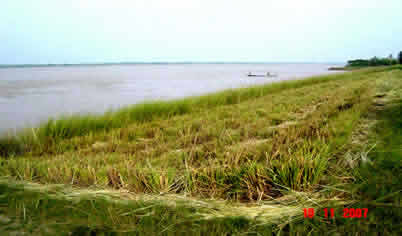
The top row (trimmed) were only partially submerged. The bank has been fully protected and the plant continued to grow vigorously providing excellent protection against wave action
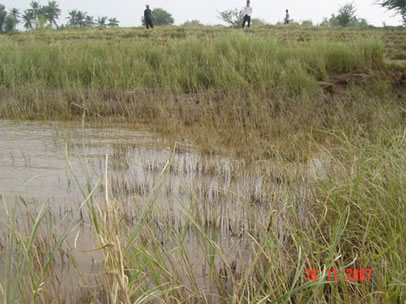
The lower rows were fully submerged for 3 months, the leaves have died back, but new growth occurs as the water levels recede.
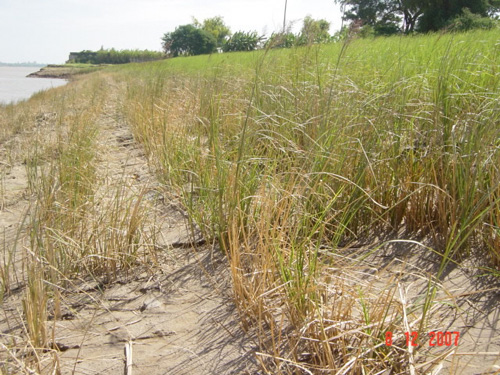
The lower rows were fully submerged for 3 months, the leaves have died back, but new growth occurs as the water levels recede. Note that instead of soil erosion there has been considerable silt deposition
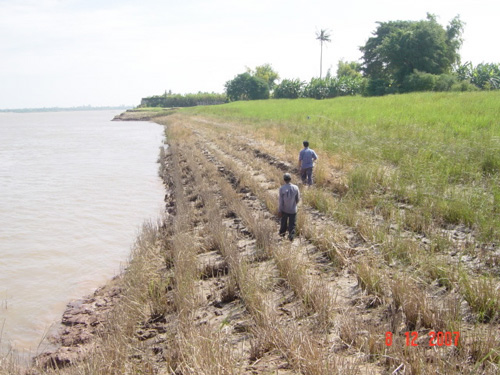
These lower rows have been fully submerged for 5 months!
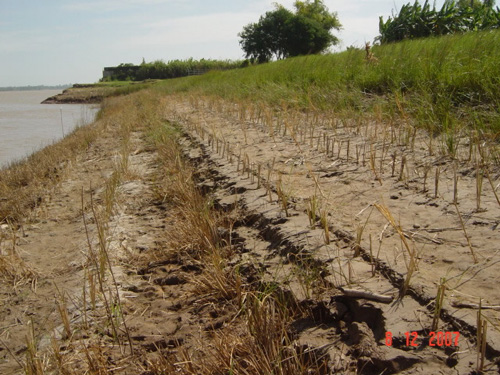
Where the silt completely covered the vetiver (it was cut back before the flood) ne plants have been planted in case the covered vetiver does not recover. But note that the lower rows are recovering their growth
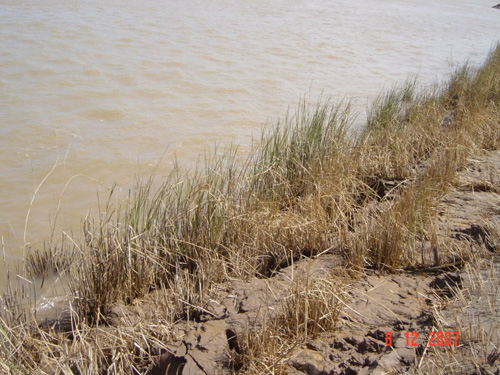
Considerable silt deposit. This vetiver was 30 ft under water at full flood and was subjected to a strong current
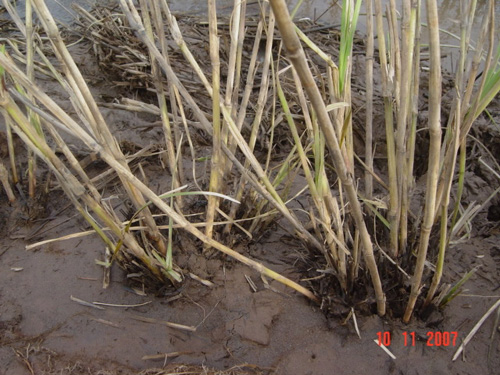
Close up of recovering vetiver showing new shoots from crown and stems
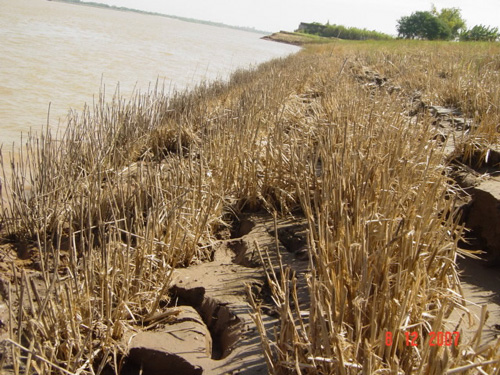
Recovering after 5 months submergence!
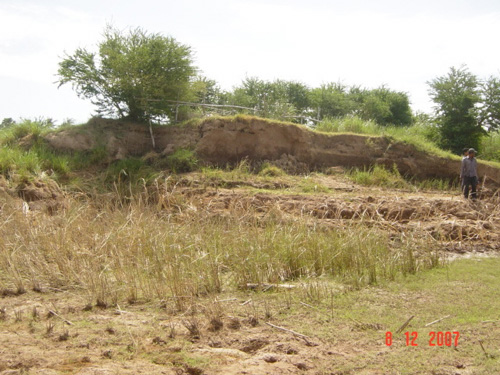
A neighbors river bank at right unprotected
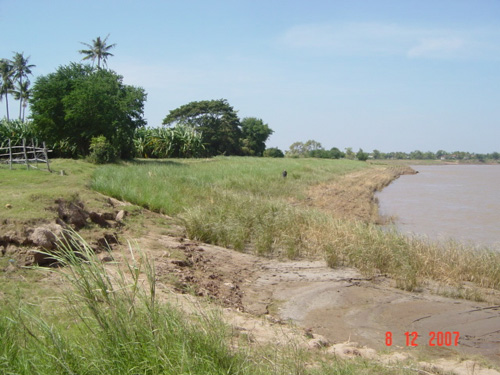
Dec 12 2007!! More to come as we see vetiver recovering over the next few months before the Mekong floods agian in June 2008
On a personal note, the project would not have been possible without the help of experts from the Vetiver.org and Land Development (and also the Internet) and I would like to particularly thank Mr. Richard Grimshaw, Mr. Paul Truong, Mrs. Suwanna Pasiri and Mr. Arthit Sukhkasem and all others who have been advising me all along the project.
Tuon Van
October 2007
December 2008